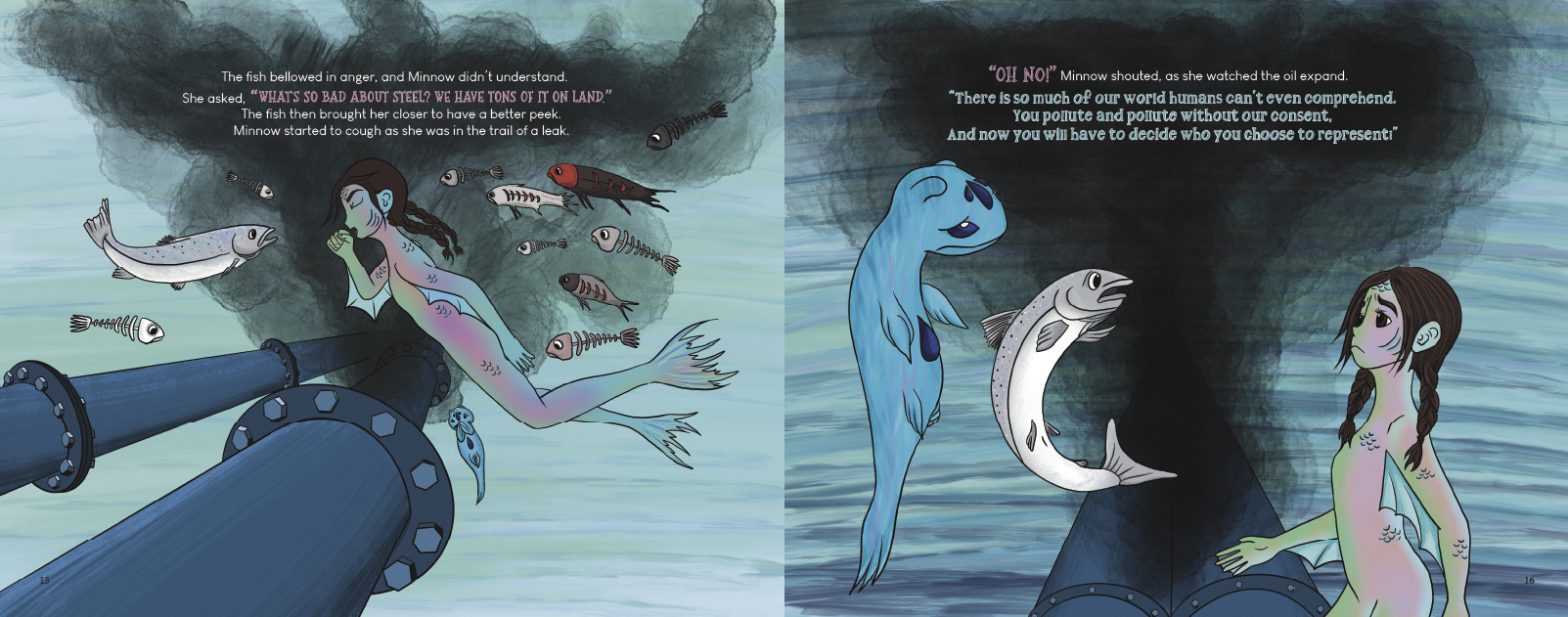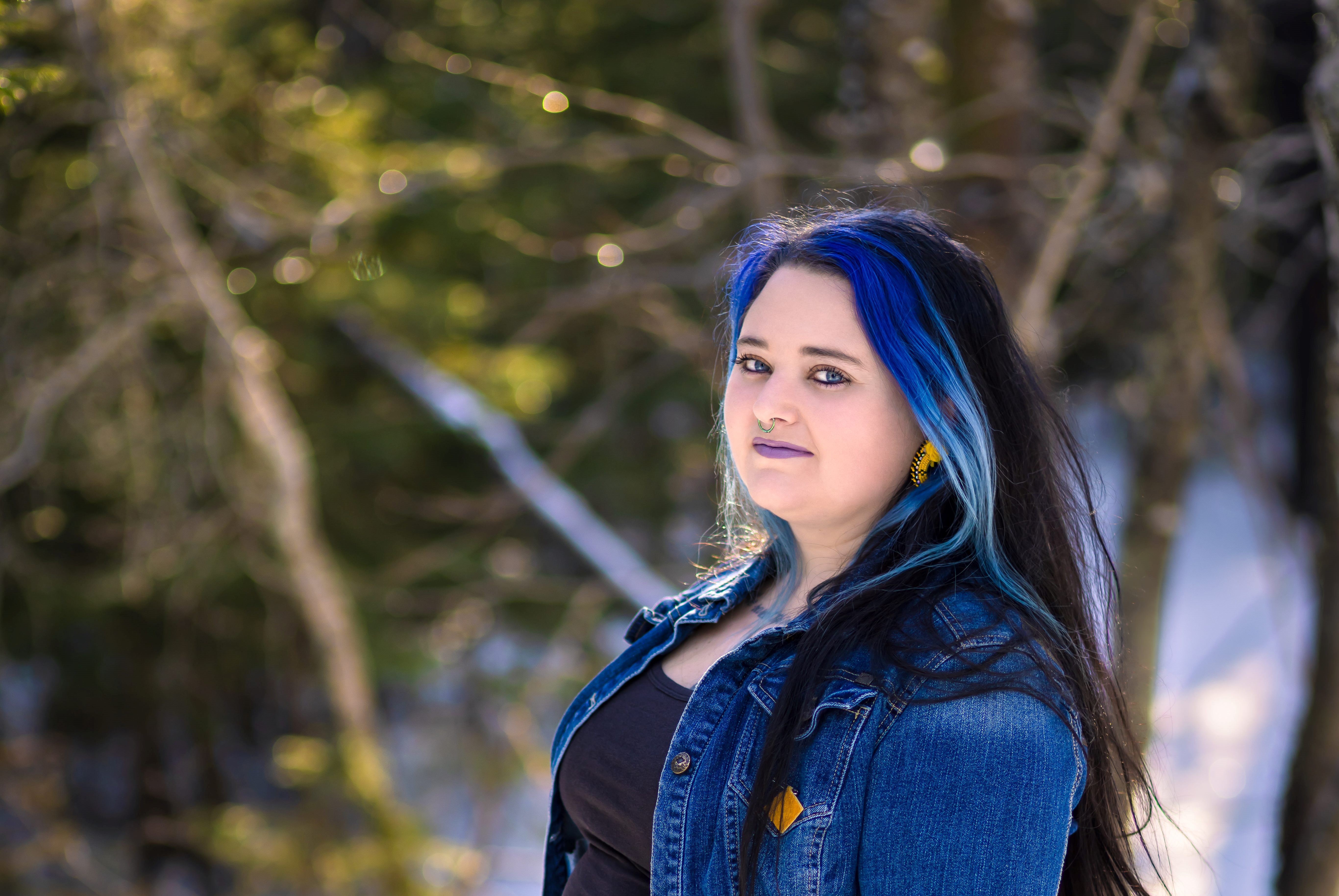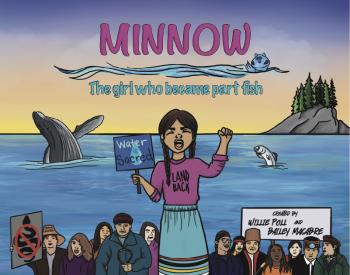Image Caption
Summary
Local Journalism Initiative Reporter
Windspeaker.com
Willie Poll has released her second children’s book titled Minnow: The girl who became part fish.
“My story is about a young Indigenous water protector who goes on this underwater adventure and just goes about learning about some of the atrocities that are happening within the oceans,” Poll told Windspeaker.com.
The short story begins with a young girl named Minnow who lived by the sea and spent time cleaning up the debris from the beaches. One day a miraculous transformation took place, and Minnow found herself swimming in the ocean, talking to the creatures, and seeing the sad truths that lay beneath the water.

Poll, a member of the Métis Nation of Ontario and former teacher, drew from her time spent within various communities along the West Coast for her book. While she traveled the coast, she listened to many stories about how the communities’ traditional lifestyles had been altered by all the changes that were happening to their waterways.
“I was a teacher, and just seeing the fight that Xeni Gwet’ in (British Columbia) was in to protect some of their waterways from mining that was trying to go in and seeing, kind of like, the pride of the youth when they had won,” Poll said.
“Even the young ones are willing to put in and wanting to understand and wanting to help and wanting to support, to create… to help maintain their pristine lands, and so that kind of fight was a huge inspiration.”
In other communities, however, the outcome of such disputes ended very differently, with pipelines being constructed on traditional lands, or fish farms established, or overfishing occurring.
She said during those years she saw first-hand the salmon populations decline drastically.
“There's a lot of people that don't have access to their traditional foods. These are real issues that are right now,” she said.
“Seeing the difference between the youth who came from a nation who had won that battle was really, really different,” she said. “There was so much more confidence and, sort of, like passion for environmental activism, and it was just really beautiful.”
Taking these weighty issues and developing a story for children is not the simplest task to accomplish, Poll said.
“I think actually writing for kids is the most difficult, because you have to take a message that’s so strong, and also sometimes more controversial or just a heavier topic like Minnow, and it is really challenging,” she said.
Her first children’s book was titled Together We Drum, Our Hearts Beat As One. It too took on a deep topic, Missing and Murdered Indigenous Women, Girls and two-spirit, people.

Although the topics are heavier, Poll said she was able to convey her message about food sovereignty in Minnow with the help of the book’s illustrator, bailey macabre.
The agender Cree and Métis artist was approached by Poll through social media and asked if they would be interested in creating the imagery.
When macabre read the story, they said they instantly could visualize how they wanted to depict the story.
When the author and the illustrator initially spoke about the project, macabre was given the freedom to illustrate the story in their own way.
“So, I really got kind of free creative rein to create the book however I saw fit,” said macabre. “So, I ended up drawing some rough sketches and kind of my ideas for what images came to mind when reading (Poll’s) story, and it basically went from there.”
Both creators hope the book reaches Indigenous youth and shows them that their voices are relevant and need to be heard, while also teaching other readers to listen to the youth.
“Children are kind of our little Elders and they have so much knowledge and openness and curiosity and are able to see the world in ways that kind of get taken out of us as we get older and kind of get bogged down by just the way society is,” said macabre. “And so, my hope is that it just encourages people to actually listen to our youth and defer to them when they have ideas and not be afraid to let them lead us when they have things that they want to accomplish.”
Poll said macabre really captured the ferocity, strength and resiliency she wanted to capture in the illustrations of Minnow.
Minnow: The girl who became part fish is available to purchase at all bookstores or online at https://www.williepoll.com/
Local Journalism Initiative Reporters are supported by a financial contribution made by the Government of Canada.

